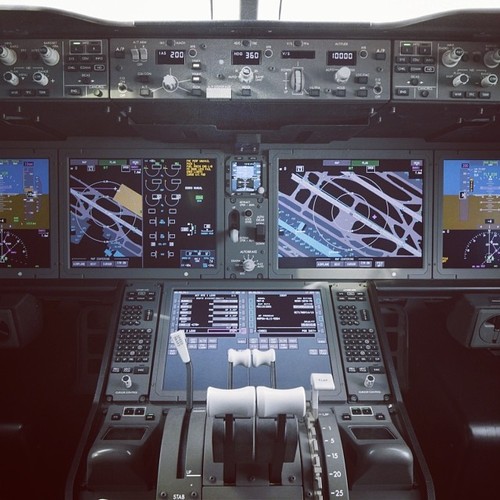Jose Fonollosa knows the language of machines better than many people know their mother tongue. Fonollosa, a professor at the Signal Theory and Communications Department of Universidad Politécnica de Cataluña in Barcelona, Spain, has spent two decades studying machine learning and speech recognition. In 2006, he was part of a team of researchers that devised a new way for machines to translate Spanish to English in the European Parliament.
But this spring, his fluency with speech recognition algorithms paid off in an entirely different way when he won the second round of the GE Flight Quest challenge. Fonollosa saw that there was a crossover between his specialty and making planes arrive on time.

GE calculated that if airlines could shorten each scheduled flight by just 10 miles, they could reduce annual fuel consumption by 360 million gallons.
Currently, the flight plans that set routes, speed and altitudes for passenger planes have one major flaw – it’s impossible to adjust them in real time during the flight. This means they can’t take account of constantly changing variables like wind, weather and airspace restraints. Fonollosa’s algorithms use national airspace data from Flight Stats to determine in real time the most efficient flight paths, speeds and altitudes.
“Basically, this algorithm examines all the possibilities to overcome obstacles at different heights and speeds,“ Fonollosa told to the Spanish daily El Confidencial. "It operates in a similar way to a traditional GPS, but since there are infinite possibilities, the key is working in a computationally optimal manner. That is the secret; being exhaustive but also efficient.”
GE organized the competition in partnership with the open Big Data community Kaggle and Alaska Airlines. The companies challenged data scientists to develop algorithms that could improve flight efficiency and reduce the number of delays. Fonollosa’s winning model turned out to be 12 percent more efficient when compared with data from actual flights. It could potentially save the industry $3 billion a year. “Jose really had an exceptional solution to the Quest,” says Dyan Finkhouse, director for open innovation and advanced manufacturing at GE.
GE is working on plans to test the algorithm and eventually build a solution that would help airlines to save fuel, reduce carbon emissions, and get planes to their destination on time. That’s a language that every traveler understands.





